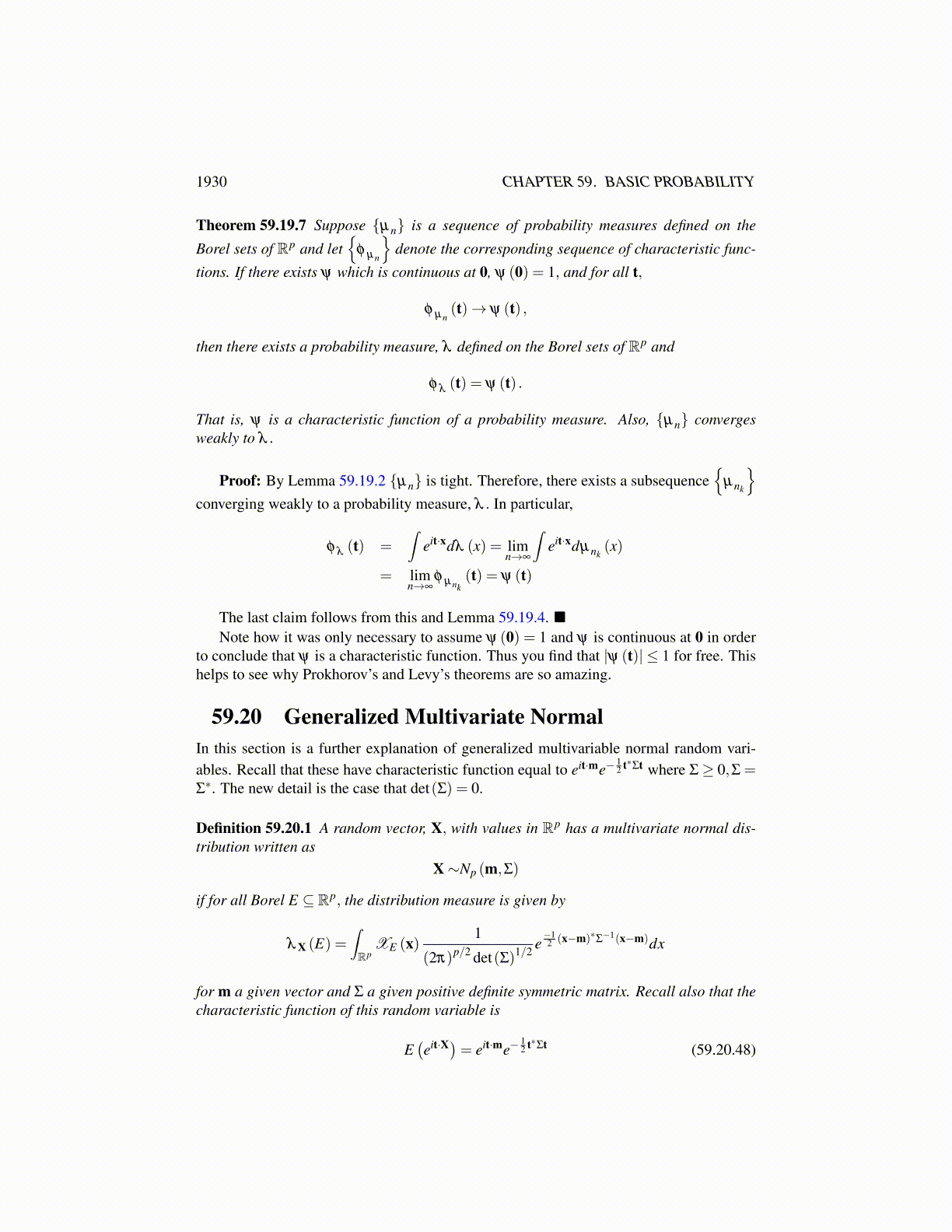
1930 CHAPTER 59. BASIC PROBABILITY
Claim: For p > n, the restriction of λ p to the Borel sets of Kn equals λ n.Proof of claim: Let H be a compact subset of Kn. Then there are sets, Vl open in Kn
which are decreasing and whose intersection equals H. This follows because this is a metricspace. Then let H ≺ φ l ≺Vl . It follows
λ n (Vl) ≥∫
Kn
φ ldλ n = limk→∞
∫Kn
φ ldµk
= limk→∞
∫Kp
φ ldµk =∫
Kp
φ ldλ p ≥ λ p (H) .
Now considering the ends of this inequality, let l→ ∞ and pass to the limit to conclude
λ n (H)≥ λ p (H) .
Similarly,
λ n (H) ≤∫
Kn
φ ldλ n = limk→∞
∫Kn
φ ldµk
= limk→∞
∫Kp
φ ldµk =∫
Kp
φ ldλ p ≤ λ p (Vl) .
Then passing to the limit as l→ ∞, it follows
λ n (H)≤ λ p (H) .
Thus the restriction of λ p,λ p|Kn to the compact sets of Kn equals λ n. Then by inner regu-larity it follows the two measures, λ p|Kn , and λ n are equal on all Borel sets of Kn. Recallthat for finite measures on the Borel sets of separable metric spaces, regularity is obtainedfor free.
It is fairly routine to exploit regularity of the measures to verify that λ m (F)≥ 0 for allF a Borel subset of Km. (Whenever φ ≥ 0,
∫Km
φdλ m ≥ 0 because∫
Kmφdµk ≥ 0. Now you
can approximate XF with a suitable nonnegative φ using regularity of the measure.) Also,letting φ ≡ 1,
1≥ λ m (Km)≥ 1− 1m. (59.19.47)
Define for F a Borel set,
λ (F)≡ limn→∞
λ n (F ∩Kn) .
The limit exists because the sequence on the right is increasing due to the above observationthat λ n = λ m on the Borel subsets of Km whenever n > m. Thus for n > m
λ n (F ∩Kn)≥ λ n (F ∩Km) = λ m (F ∩Km) .
Now let {Fk} be a sequence of disjoint Borel sets. Then
λ (∪∞k=1Fk) ≡ lim
n→∞λ n (∪∞
k=1Fk ∩Kn) = limn→∞
λ n (∪∞k=1 (Fk ∩Kn))
= limn→∞
∞
∑k=1
λ n (Fk ∩Kn) =∞
∑k=1
λ (Fk)